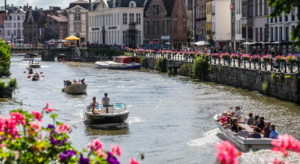The future is here as floating cities become reality
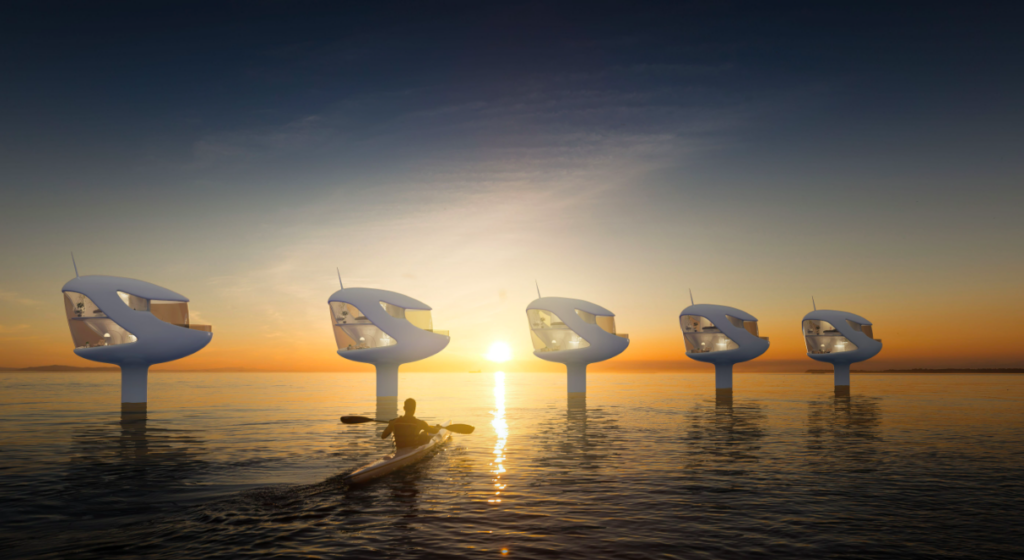
From South Korea to Panama, via the Maldives, a new wave of living on the water is inbuild. But it’s not on boats. It’s on floating cities, designed with the eco-conscious in mind and as a direct consequence of climate change.
The challenge is massive: two out of every five people in the world live within 100km of the coast, and 90 percent of mega cities worldwide are vulnerable to rising sea levels, says the UN. Flooding is destroying billions of dollars worth of infrastructure and forcing millions of climate refugees to leave their homes. With nowhere to expand, rapid urban population growth is pushing people closer to the water, driving housing costs to prohibitive levels, and squeezing the poorest families out.
Busan’s prototype for floating cities due 2025
South Korea’s Oceanix Busan is billed as ‘the world’s first prototype of a resilient and sustainable floating community’. Developers say it’s being built to help coastal cities, like Busan, threatened by a rising sea level. The prototype – which aims be finished by 2025 – has been backed by the United Nations Habitat project. It’ll be flood resistant and will be made up of a series of islands which rise with the sea.
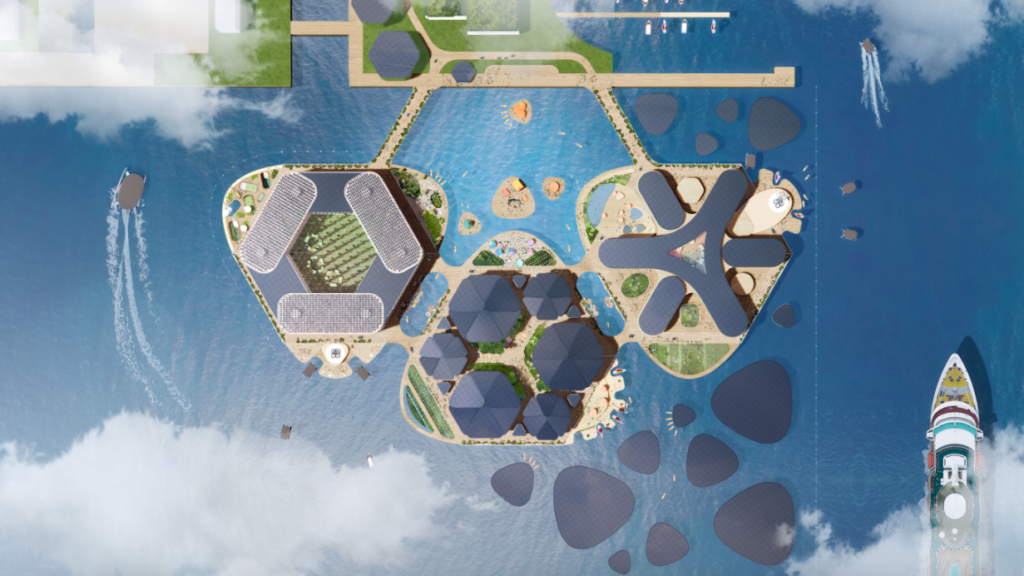
At 15.5 acres, the plan is to initially accommodate a community of 12,000 people across three platforms, potentially rising to 100,000 people in the future as platforms are added. The floating platforms will feature photovoltaic panels and greenhouses and there will be distinct neighbourhoods for living, research, and lodging (seemingly guest rooms with organic dining).
Each neighbourhood is embedded with integrated systems that generate energy needed on-site, treat and replenish water, reduce and recycle resources, and provide urban agriculture to fulfill a local plant-based diet, says the developers.

Maldives Floating City to preview houses in 2022
In June 2022, Dutch Docklands Maldives acquired the last necessary signatures in order to start Maldives Floating City.
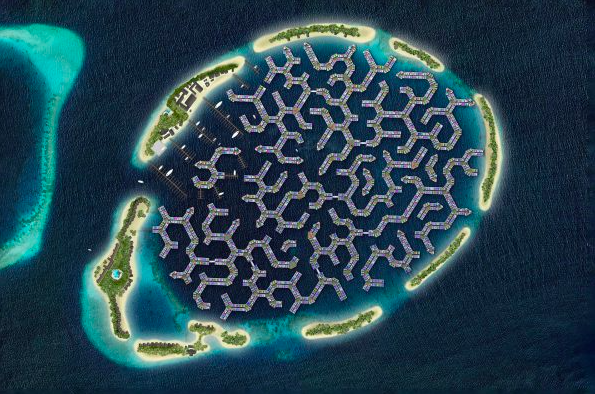
This housing project is being developed in a lagoon 15 minutes boat ride from Male’ and is looking to comprise 5,000 housing units, tethered to the lagoon floor and linked together.
Dutch Dockland Maldives is a public-private partnership with the Government of Maldives with the first-show block of floating homes (constructed by Bison Maldives) due to be transported to the lagoon and opened late summer (2022).
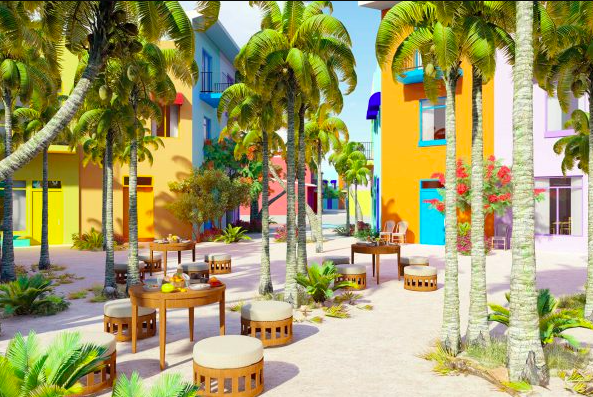
The modular city construction is accordingly scheduled to begin in January 2023 and will take four to five years to complete with a mix of houses, hotels, shops, restaurants and a marina.
“This Maldives Floating City does not require any land reclamation, therefore has a minimal impact on the coral reefs,” says Mohamed Nasheed, president of the Maldives from 2008- 2012. “What’s more, giant, new reefs will be grown to act as water breakers. Our adaption (sic) to climate change mustn’t destroy nature but work with it, as the Maldives Floating City proposes. In the Maldives we cannot stop the waves, but we can rise with them.”
The buildings will float on the water’s surface, but island barriers around the lagoon will serve as breakers below the waterline to help lessen the impact of waves.
What’s it like to live in floating cities?
According to the BBC, residents will get used to the motion in floating cities.
Schoonschip, designed by Dutch firm Space&Matter, consists of 30 houses, on a canal in Amsterdam. Siti Boelen, a resident, says that when she first moved in, stormy weather made her think twice before venturing up to her third-floor kitchen, where she felt the movement the most. “You feel it in your stomach,” she told the BBC, adding that she has since become used to the feeling.
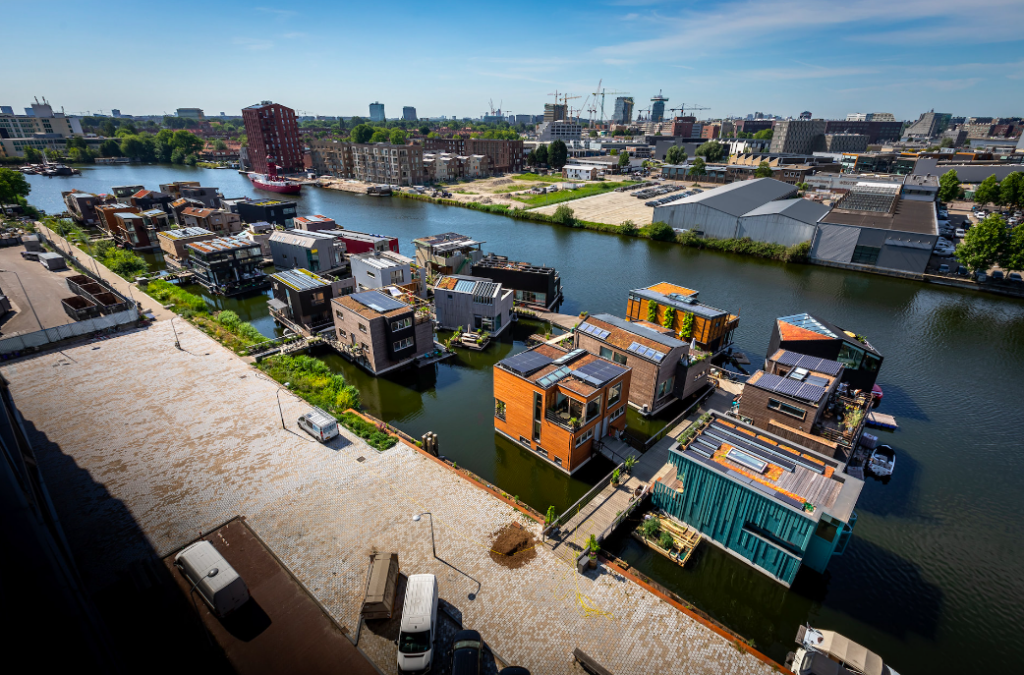
During storms, the neighbourhood slides up and down its steel foundational pillars, rising along with the water and descending to its original position after the rain subsides.
“We feel safer in a storm because we are floating,” says Boelen. “I think it’s kind of strange that building on water is not a priority worldwide.”
SeaPods for two coming in 2023
A different tack is being taken in Panama where Ocean Builders is planting Seapods in the seabed. The company says its eventual goal is to have SeaPod homes in every corner of the ocean rather than one of the tightly knit designs of other floating cities.
These rounded, two-person, three-and-a-half-story luxury homes sprout out of the water by way of long steel stalks. Each pod is set to offer a breathtaking 360-degree view of the ocean, and exactly how far it is to swim for groceries, community or healthcare (although drones are anticipated to service most needs).
Ocean Builders says that the first 100 pods will either be in production or delivered by the end of 2023, and the company is hoping to launch a rollout of 1,000 more structures over the following year.
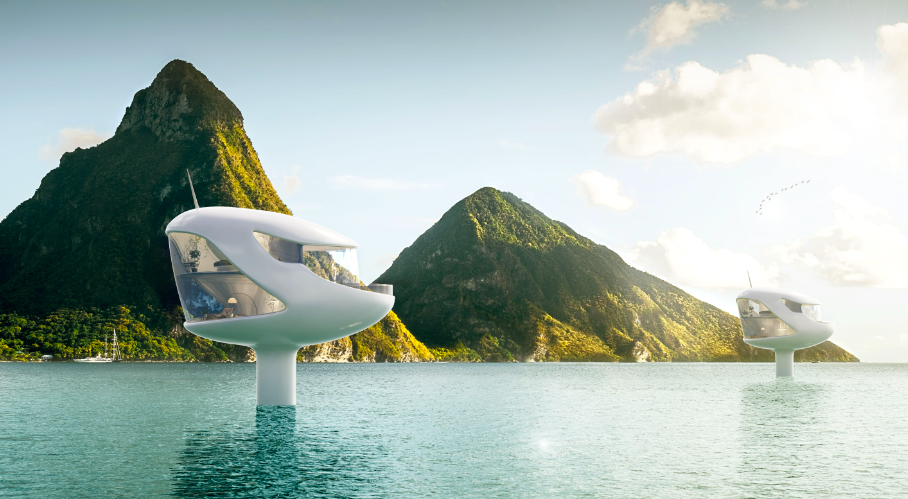
“We are planting the SeaPod seed here in Panama,” the company’s CEO says in a statement, “but our eventual goal is to have SeaPod homes in every corner of the ocean, all around the world.”
Ocean Builders is currently working out how to ship them, broken down into 70 pieces, in two shipping containers.
“This is also only the shell of the pod so shipping spars or outriggers could be another challenge that we may have to tackle but since these things are made of steel, it may be possible to build them on-site since we won’t need moulds,” says the company’s website.
“The ability to put these homes into shipping containers gives the entire planet access to our homes and we hope to one day see people enjoying life in our SeaPods all around the planet.”
And if someone wants one, they’re reportedly currently on pre-order from $295,000 and can go up to $1.5 million based on upgrades.
Underwater hotel market facing challenges, says new report
For those who can’t wait to try out living in a floating city, the underwater hotels market is projected to reach US$ 11.6 billion by 2032, according to Future Market Insights. But that figure comes against a backdrop of many challenges, including environmental concerns.
These include recycling waste prior to dumping it into the ocean, and removing corals, rocks, and seaweeds from construction sites, disturbing the ecosystem. Then there’s all the lights which disturb the marine life with food sources and habitats at stake. All of this appears to make underwater hotels unviable development projects, as they pose a major threat to the marine life.
Future Market Insights says several investors are withdrawing their money from the ongoing underwater hotel projects. The cost of development is exorbitant and these hotels require ultra-modern architecture with most advanced technology to build. Therefore, their construction is expensive as well as time-consuming.
While underwater hotels have held a huge fascination for quite some time, the evident lack of them underlines the challenges in accomplishing these developments and turning them into a commercial reality.
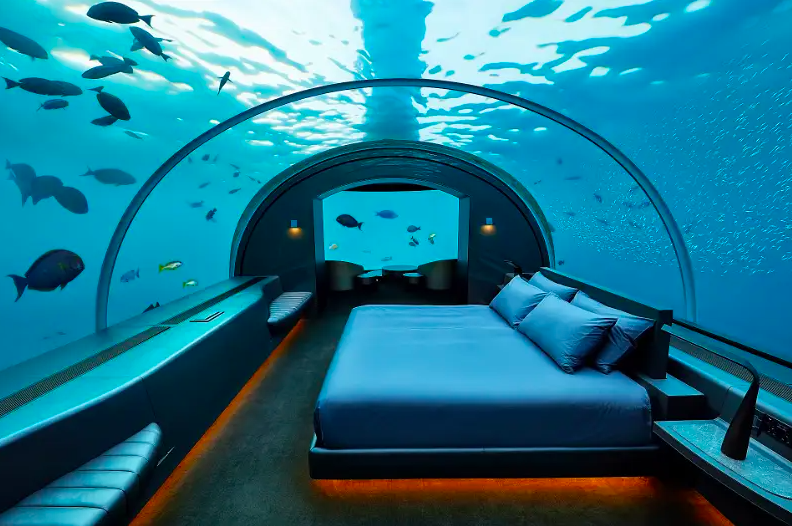
Building floating homes
A floating house can be constructed on any shoreline and is able to cope with rising seas or rain-induced floods by remaining atop the water’s surface, says the BBC. Unlike houseboats, which can easily be unmoored and relocated, floating homes are fixed to the shore, often resting on steel poles, and are usually connected to the local sewer system and power grid. They are structurally similar to houses built on land, but instead of a basement, they have a concrete hull that acts as a counterweight, allowing them to remain stable in the water.
They also require extra infrastructure and work to connect to the electricity grid and sewer system, with special waterproof cords and pumps needed to link to municipal services on higher ground.
There are calls for the standardisation of these types of floating building. Virginie Segura, project manager for Vicastel Project Management, says: “There is a lack of building regs in this area. We need a roadmap, a standardised set of rules, for projects incorporating a floating building or structure.” The confusion around the issue is underpinned by a June 2022 ruling in Miami regarding a floating mansion. As reported in Marine Industry News, it will evade a tax bill of nearly $120,000 because its owners have proven it’s a boat.
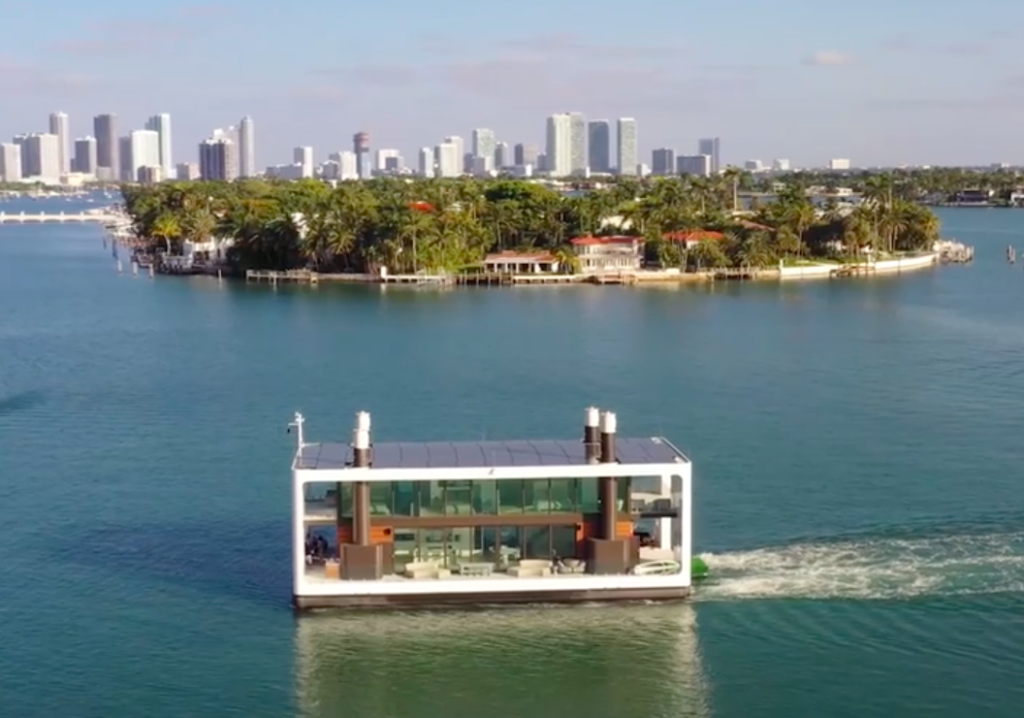
Read more about developments in the Netherlands via BBC News.



